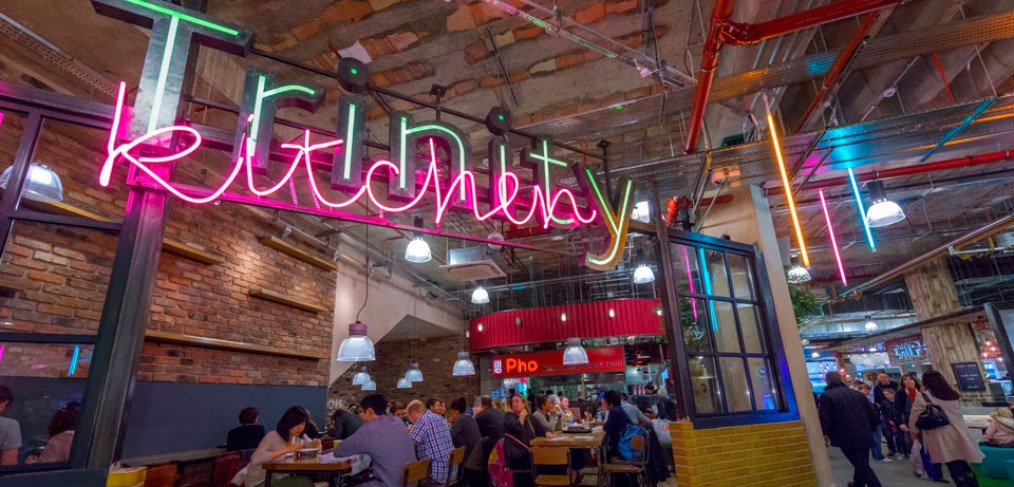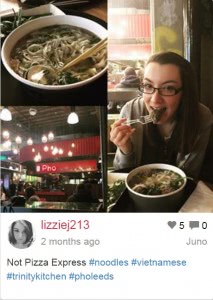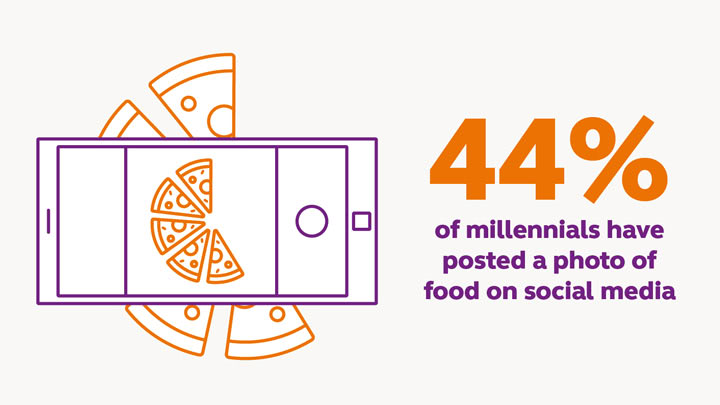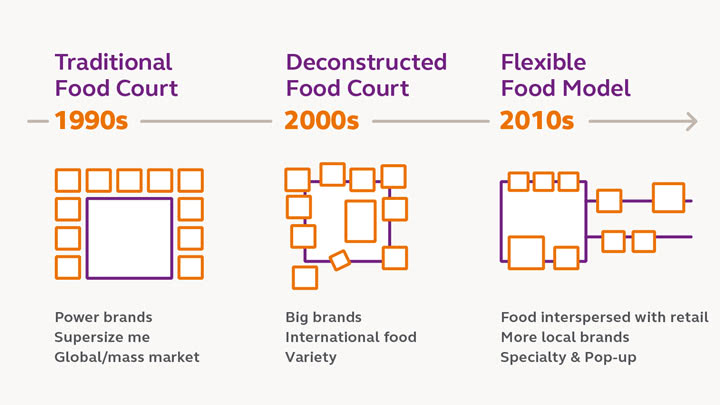
Cultivating an Appetite for Shopping
 Pizza. Chicken. Burgers and ice cream. The traditional mall food court has been a junk food eater’s paradise, but times have changed, and so has the way that we design for the hybrid shopper-diner—especially as retailers, operators, and developers increasingly understand the power of the right food and beverage mix in boosting dwell time and sales.
Pizza. Chicken. Burgers and ice cream. The traditional mall food court has been a junk food eater’s paradise, but times have changed, and so has the way that we design for the hybrid shopper-diner—especially as retailers, operators, and developers increasingly understand the power of the right food and beverage mix in boosting dwell time and sales.
What is behind this sea change? Today’s consumer is generally more sophisticated, more discerning, more adventurous, and quite simply, busier. Technology also plays a significant role with its multitude of ways to streamline the shopping experience and make it more efficient. To make the trek to the shopping mall is to seek out value—to seek out an experience—that can’t be found online.
The advantage is clear: a shopping centre can use its food and beverage (F&B) component as a tactic for stimulating the senses in a way that e-commerce cannot. While online shopping continues to improve upon its capabilities to engage customers in a visual and auditory experience, you can’t touch, taste, or smell the internet. But those croque monsieurs or Venezuelan flatbread sandwiches at Trinity Kitchen in Leeds? That’s another story.
Furthermore, consider some compelling statistics: shopping centres have become the most popular places to eat in Europe, the Middle East and Africa. In 22 countries, 41% of consumers with access to a shopping centre prefer to eat there, compared to 10 percent in restaurants and cafes on the high street, and 7 percent in retail parks. So what considerations should we keep in mind when designing for the shift from fast food to fashionable food? Here are three key ingredients.
From Dawn til Dusk
The right F&B mix caters to consumers from morning until late evening—from a relaxed café where they can grab a cup of coffee and a pastry to fast casual, healthy lunchtime options and competitively positioned restaurants and bars capable of drawing crowds at night. The shopping centre must accommodate multiple food destinations in the shopping circuit to attract visitors consistently throughout the day.
As dining becomes inextricably linked with the shopping experience, we see cafes and restaurants moving to the forefront of shopping centre design: a strategically positioned coffee bar, an indoor/outdoor dining precinct, or a rooftop bar, for example.
Local Flavour
Any designer will tell you that one of the key strategies for successful design is effective placemaking. When it comes to the importance of crafting a space in a manner aligned with the culture, tradition or heritage of the particular location, shopping centres are no exception. The F&B component should reflect that.
Pop-ups and a constantly refreshed line-up lend themselves nicely to showcasing the latest and greatest local culinary trends. For example, at Gourmet 494 in Seoul, South Korea, Seoul’s hottest restaurants, cafes and bakeries maintain concession stands within a “grocerant” centre. That, in turn, necessitates a different design approach—one where flexibility and variety are vital.
Dining as Destination
A recent article by Jonathan Doughty, Head of EMEA Foodservice Consulting at Coverpoint, points out that the traditional food court is the antithesis of a destination and does operators and retailers no favours with its “low spend, quick service, low experience” offering. Doughty highlights CentrO Oberhausen, a shopping centre designed by RTKL (now known as CallisonRTKL) in Germany, as being innovative and ahead of its time in building the kind of “differentiated real estate” necessary to host a diversified, high-quality dining experience.
Current projects move the design philosophy behind Centro Oberhausen forward: careful attention to the design of the public realm and restaurant shopfront detailing make outdoor dining possible year-round for Berlin Entertainment District, while leisure operators and restaurants at the Mall of Egypt share a beautifully landscaped outdoor public space which becomes the focal point for extended evening visits by families and a meeting place for friends.
At shopping centres that get F&B right, the dining becomes the destination and the food becomes the conversation. Diners may be converted into shoppers rather than the other way around. F&B can heighten the experience and be the social glue that holds the shopping centre together, and a memorable meal can be a catalyst that helps it thrive.
Cover photo via: © Giles Rocholl Photography Ltd


